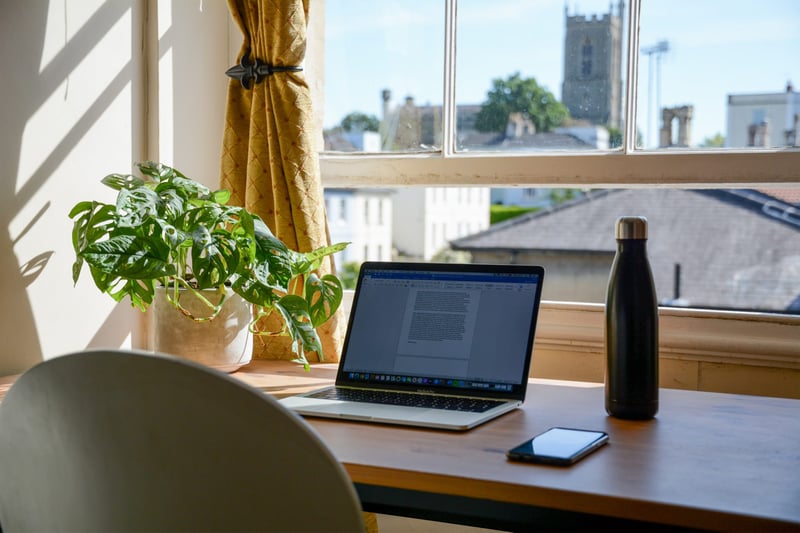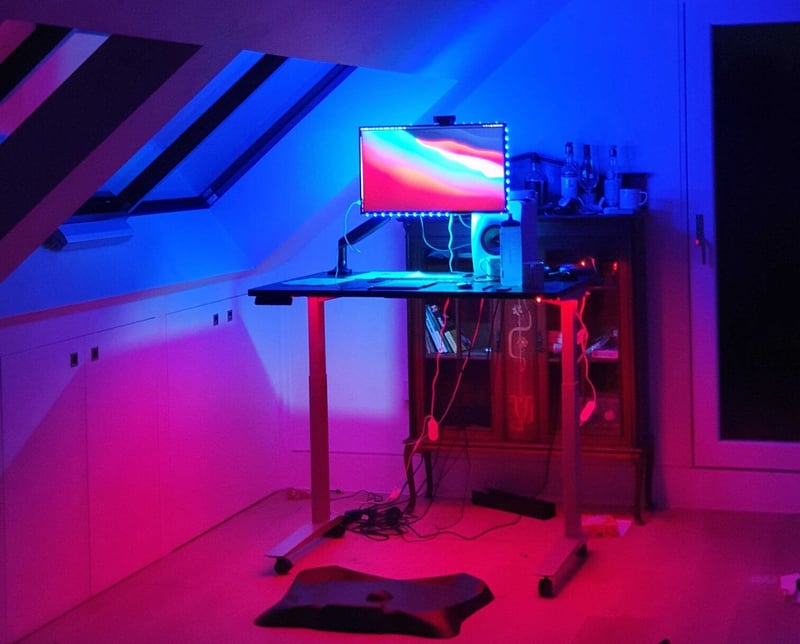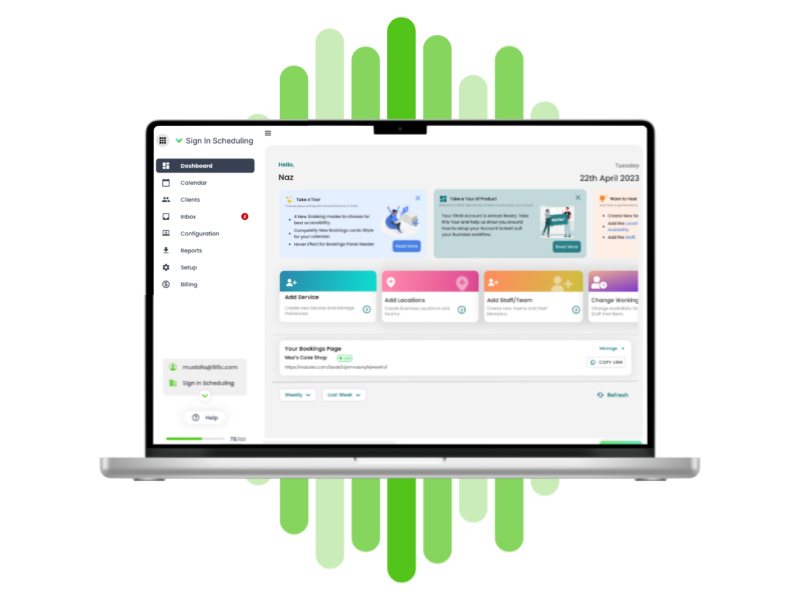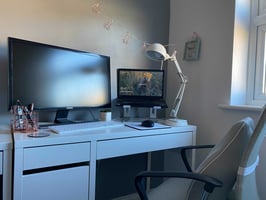Stress in the workplace is a huge problem in today’s society. Did you know that workplace stress is...
Avoid Work From Home Burnout with These Top Tips
It’s Monday morning. The coffee is brewing and you’re in front of your computer preparing to tackle a never-ending list of tasks. You feel yourself starting to get sick of work and it has only been an hour.
And there you have it; You might have just experienced the first signs of work-from-home burnout.
The work-from-home trend has been on the rise for quite some time now and it’s not slowing down anytime soon. With a lot of people looking to take advantage of their freedom from an office setting, remote working is becoming more and more popular with each passing year.
The perks are obvious: no commute, flexible hours, less distraction from coworkers, and increased productivity. But here’s what you might not know about this lifestyle – when done incorrectly (or without proper planning), it can lead to burnout.
How can remote work lead to burnout?
It’s easy to think when you’re working remotely, you can’t get burned out. You work from home, so how could you feel the same as people who have a hectic commute, noisy, distraction-filled office, and managers breathing down your neck?
However, with the lines between work and home life blurred together, it’s more important than ever to protect yourself from remote work burnout.
You see, it’s one thing bringing the office home with you but a completely different matter when your home becomes the office. Setting boundaries between your personal and professional life is essential.

There are so many great tools to help you manage your workday, but very few to help you manage your work-life balance.
It’s harder than you think to switch off and stick to the 9 to 5 from home. Especially if you’re engrossed in a project that you could probably finish in the next 30 minutes… Then, before you know it, it’s 8 pm, dinner’s not even started, you still haven’t finished the project and you’re more stressed and frustrated than ever.
Half the trick of preventing burnout at work is knowing when to stop. It’s knowing when to put your to-do list away, shut the laptop lid and come back to it tomorrow. Remember it’s okay to give yourself a break – in fact, it’s vital, for the sake of your mental health.
For example, here at 10to8, all employees are actively encouraged to take an hour every day during their working hours to get some fresh air, go for a walk, and have a complete break from screens. This helps us stay refreshed and come back to work more focused. Plus, each of us has our own little tips and tricks to avoid working from home burnout, which we’ll cover later in the article.
What is remote work burnout?
Remote work burnout is a state of mental and physical exhaustion that is usually caused by long periods of anxiety. It’s defined as: ‘chronic workplace stress that has not been successfully managed’.
A few symptoms of work burnout include:
- Feelings of exhaustion
- Reduced efficiency and productivity
- Feeling mentally distant from your job
- Feeling negative toward your job
- Trouble sleeping
Always feeling like you have loads on your plate, struggling to meet constant demands, or perhaps even pushing yourself too hard, can contribute to this. An unhealthy work-from-home situation can also lead to burnout.
How to deal with working from home burnout?
According to a recent study, the average remote worker is doing the equivalent of an additional working day per week in unpaid overtime. That’s between 8-9 hours of unpaid work.
The study also found that:
- 34% of people struggle to stick to set hours from home and actually log off on time
- 1 in 4 said that they wanted a better work-life balance,
- 34% said they felt more anxious,
- 25% struggled to switch off at the end of the day,
- 31% felt an increase in workload-related stress and,
- 22% said they had trouble sleeping.
If you are feeling any of these the best thing to do would be to talk to your employer.
Any good workplace will be willing to accommodate your feelings and help make things better for you. There are also certain things that you can do yourself that will prevent you from experiencing working from home burnout.
What should you not do while working from home?
Firstly, don’t work yourself into the ground. A study from OwlLabs reported that remote workers tend to work more than 40 hours per week – this is a staggering 43% more than those who work from a traditional office environment. So, make sure you know when to call it a day.
Secondly, don’t let your home environment distract you as distractions can ultimately lead to burnout. When you’re distracted, you end up procrastinating, which then leads to none of your actual work getting done. Soon, you’ll have two days worth of work to do in one and you end up being more stressed than you were before. This leads to overworking and a vicious cycle. So, don’t let yourself get distracted.
There are countless ways to procrastinate when you’re working from home. Even things like the oven (fancy baking banana bread in the middle of the day?) can end up causing a distraction if you let them. But try to focus on the task at hand, set strict rules (no personal screens until I finish this task) and set yourself up for success.
It’s also important to remember not to coop yourself up in front of your computer all day long. Make sure you take breaks during the day either by going for a walk or socializing with colleagues.
So now that you know some things to avoid, let’s cover what opportunities to seek out to improve your work-life balance.
How can I avoid work burnout whilst working at home?
Everyone has or should have their own set of senses to keep free from work burnout; Our team does too.
We asked some of the 10to8 Team what their top tips are to avoid work from home burnout and collected some weird and wonderful advice – including building and launching rockets! Here it comes…
Take time away and ditch the WiFi for a while
James Kemp, Customer Success – UK
Before I started at 10to8, I was working long hours during the summer. One night, I decided to book a last-minute break to Rhodes. I found a fantastic hotel with an all-inclusive package and the flight left in 10 days. This gave me something to look forward to and allowed me to push through the last few tough days in the office.
I didn’t realize it at first, but I had terrible WiFi service in the hotel. Initially, this was a bit worrying as I’d been tied to the internet for months leading up to the trip. But, it turned out, I had no choice but to relax into this new internet-free lifestyle for a few days.
And it was heavenly. There was nothing to do but relax. No emails, no phone notifications, no constantly checking social media.
My tip is to find somewhere with awful Wi-Fi so you can focus on yourself and enjoy the quiet time. Alternatively, you could artificially reproduce these conditions by simply switching off the internet – just for a day or so. It works wonders.
Solve puzzles and get creative
Matthew Cleevely, CEO – UK
If you want to avoid workplace burnout, my advice is to get creative in your spare time. I enjoy using Lego and building water rockets – activities that are away from the screen and use another part of my brain.
I also try to take 20-minute a week to improve my work environment. My desk is a multi-color-lit masterpiece and I’m currently building a water rocket that’ll get a GoPro to over 100m.

Use your slow cooker for healthy lunches and easy dinners
Jon Cooper, Customer Success Manager – UK
I like to use the start of my lunch break while working from home to make healthy soups for easy lunches or dinners throughout the week.
Using a slow cooker means that you can keep it simmering away on a low heat all day for delicious and healthy meals in the evening. Plus, this helps to keep my mind away from work and focus on a non-work-related task.
Let me share my favorite recipe:
- Cut up 2-3 carrots, 2-3 onions, 5 cloves of garlic, 8-9 tomatoes, and a bunch of thyme.
- Put in the oven at 180-200C (350-400F) for 30-40 minutes until properly roasted through and browning.
- Then, boil chicken stock in a large stockpot, with a tin of crushed tomatoes, tomato paste, a dash of red wine vinegar and chili flakes.
- Add the roasted veggies, mix and bring to boil for a few minutes.
- Lastly, get a handheld food processor and blitz until smooth.
Voila!
Utilize to-do lists to stay motivated
Laura Ficarra, Head of Admin – UK
One of my top tips for avoiding burnout at work is to have a list of things you would like to achieve that day. As you finish them, highlight or cross them off. When you get to the end of the day, you will be shocked by how much you have actually done.
But, unexpected tasks sometimes come up in any workplace, so don’t be deflated if you have to deviate from your nicely organized list. Just take some time and write what you actually did instead. More than likely, you’ll still be pleasantly surprised by what you’ve achieved.
(Enhance your to-do list with the top productivity tools of 2021.)
Try not to push yourself after hours (Aaron)
Aaron Chek, Sales – UK
Setting limits is the most important thing in avoiding work burnout. It’s easy to push yourself to work past the traditional 9 to 5 when you’re working from home. But respecting yourself is so important; You shouldn’t forget this.
Without the dreaded commute to separate our personal and professional lives, it’s harder to switch off. However, where possible avoid pushing yourself too hard and try to log off when you’re supposed to finish work – and not a couple of hours after.
Stay hydrated with your favorite drinks
Alice Smith, Marketing – UK
When I say favorite drinks, I’m not talking about the half-empty bottle of strawberry gin in the cupboard!
Coffee and other caffeinated drinks like green tea are known as stimulants and can help you focus. Studies have shown that caffeine helps the brain to identify words and phrases more quickly, meaning your favorite drink could be helping you excel at your job.
Some drinks, particularly coffee, give you that little buzz of energy you need to get going in the morning. Plus, it just tastes nice, which is bound to put you in a good mood.

Remember that caffeinated drinks taste lovely, but can result in some fluid loss, so don’t forget to pair your coffee with a nice glass of water.
If you don’t drink enough fluids, one of the first things you’ll notice is muscle fatigue. This alone can be a problem when you’re working from home as tiredness will almost always lead to a lack of focus. As well as this, drinking more can also help boost your brain function, reduce headaches and increase memory.
So, whether it’s a glass of cucumber and mint infused water, a cup of strawberry green tea (one of my personal favorites), or a hot, frothy latte, your favorite drinks can help prevent working from home burnout.
Don’t skip breakfast and keep fit
Liam Glavey, Sales – UK
Make sure you eat breakfast. It’s been called the most important meal of the day for a reason. It has been proven to help improve memory, concentration levels and have other health benefits like lower your chances of getting diabetes and heart disease.
To avoid work burnout and increase productivity, I recommend trying your best to stick to your usual morning routine. Don’t oversleep, but instead wake up as you would if you were still traveling to the office. Have breakfast and get dressed and ready for work. But, instead of sitting on the train for 30 minutes and falling asleep, why not try starting an exercise regime?
I have dedicated 30 minutes of my mornings to Joe Wicks routines. I have dropped more than 20 lbs in the last 2 months and started my working day feeling much more alive, much more awake, and much healthier.
Maximize your lunch break
Laura Ficarra, Head of Admin – UK
My top tip to avoid burnout at work is to maximize your lunch break. Preparation is key for this one.
When we’re working from home, we often use half of our lunch breaks preparing our food then trying to eat it as quickly as we can before getting back in front of the computer, or worse, eating at our desk and still typing away.
This doesn’t allow us any time to actually switch off.
So, instead, prepare your lunch the night before, and take a walk on your lunch break. I often have my headphones in with my favorite tunes on, then my phone goes in my pocket to prevent the inevitable mindless scrolling on social media.
When I’m back from my walk, I can then just grab my lunch out of the fridge and enjoy. Or if time allows, take it with you and find a nice spot in a park or nearby river, and eat your food with a view.
Have a separate workspace
Dawud Allinson, Sales – UK
Even though I’m working from home, I try to separate work life from home life as much as possible. This can be something as simple as making a separate space for working – whether that’s a study room or a foldaway desk in the living room!
Since my commute now consists of opening the study door, I try to make sure I close it at the end of the day and try not to use the space outside of work hours. Getting outside when possible, also helps recreate that now blurred line
This is also known as ‘fake commute’, as it mimics my previous commute, and puts a clear separation between work and home life.
Change your environment
Karanpreet Ajmani, Marketing – India
To avoid work burnout, I like to change my spot at least once a day. Sometimes I work at the bedroom desk (not in bed, of course), other times in the living room, or maybe in the garden if the weather is nice. A change of surroundings has a tremendous impact on brain function and helps boost my creativity.
When I get stuck on a task, I simply change location and I almost instantly get unstuck. I also noticed that some types of work are best done sitting on the sofa in the living room (like writing blog articles), and others require me to sit at my desk in the bedroom (mainly analytical tasks).
Have a separate PC account for work and for personal
Marcel Wundrich, Head of Customer Success – Germany
Many people that work from home use the same laptop or PC for work and personal use. In the evenings, it can sometimes be quite difficult to shut down from work.
Even when you’re watching Netflix, you might get a notification on Slack or a work-related email popping up on your screen.
Of course, if you see it, you’re more likely to respond to it as well. But this could lead to you falling down a rabbit hole of work-related conversations or clearing every email out of your inbox.
To avoid this, set up a personal profile on your laptop or use a different device after work. At 10to8, this is of course a security and compliance-related requirement too, but it actually helps me avoid working too late.
If I’m using a computer that isn’t connected to anything work-related, then I have no chance of seeing work notifications and I can enjoy my evenings in peace.
Take breaks during the workday
Laura Garofalo, Sales – Italy
Making sure I take proper breaks during my day is very important to avoid working from home burnout. Just as I used to do in an office, I like to eat my lunch in a different room from the one I work in. I also go for little walks to stretch my legs and take a breath of fresh air and have coffee chats with my colleagues where the conversation is strictly non-work-related.
At home, it can be hard to remember to do this, especially if you get wrapped up in a task, but block some time off in your booking calendar to give yourself a rest. I find that making sure to fit these in helps my mood and productivity throughout the day.
Analyze why you’re busy
Jacob Buckland, Head of Sales – UK
My top tip for avoiding work from home burnout is that, if you’re constantly finding your plate full or feel that all of your days are back-to-back busy, look at why you’re busy. Is what you’re doing actually important or are you giving yourself more tasks than strictly necessary?
Find out what’s important to your success. Once you know this, don’t be afraid to cut away things that aren’t essential to the intended outcome. Once you’ve done this, you’ll likely find that you have more free time and are less stressed out,
Other than that, make sure to meditate, reflect and ask yourself how you feel every day.
Use alarms to stay on track
Michael Brockwell, Customer Success – UK
My best tip for preventing work burnout and staying productive is to set alarms for everything I do – no matter how big or small the task.
This way I productively use my time, ensure I get breaks when I need them, and I know when to stop. I do this with a combination of alarms on my phone, desktop reminders, and my planner.
When I’m working, I want to be as productive as possible and I don’t want to drop the ball on tasks because of the big workload. And when I’m done for the day, I want to log off knowing that everything is taken care of and the rest of the work will wait for me until tomorrow.
Make use of natural light
Simon Chan, Engineering – UK
People tend to think about light in terms of taking care of eyesight when using screens, but it’s also important for regulating the body clock. To help prevent burnout at work, try and make use of any natural light you have access to, especially if you have some in your work area.
If you work near a window, then open the curtains or blinds to let the sunlight in. If it’s warm outside, you could even open the window and doors too for a refreshing breeze.
Additionally, reflective surfaces and mirrors are great for bringing natural light further into a dark space. When you’re taking your breaks, seek brighter spaces whether it be outdoors, or in a brighter room.
The 3F rule
Nadia Mancieri, Customer Success – Italy
Working from home can be sometimes difficult, that’s why it is so important to look after our body and mind all the time.
Why the “3F”? Fun, food, and fit!
Try to ensure that you’ll have a good day – no matter what. This could be by planning a fun activity during your lunch break. It could also be by making small changes to your home office environment to make it more appealing, playing some soothing music in the background, or having an inspirational screensaver on your TV if you have one in the room.
Keeping a healthy diet is also essential to having the energy we need throughout the day and so is giving our body good exercise. Plus, don’t forget to look after your eyes! It’s super important for them to focus on the long distances as well during the day rather than constantly staring at small, close-up screens.
Timebox your day
Temi Erinoso, Account Manager – UK
A recent thing I had to start implementing was blocking time in my calendar to take a break. I was finding that, unless I set myself a schedule, I was finding it difficult to switch off, not leaving my desk all day and was constantly working through.
I found that, by the end of the day, I was exhausted, and I sometimes finished quite late anyway depending on whether I’m talking with our US clients. To avoid working from home burnout, try to timebox your day when possible. Now, I try to hyperfocus my time on certain things or projects and then block my work breaks in my calendar, so I am forced to take them.
Pick up an off-screen hobby
Anna Kocsis, Head of Marketing – Hungary
By the end of the day, I’m absolutely sick of screens and keyboards. Even scrolling through social media on my phone or watching a show on Netflix seems like a horrible way of spending my evening.
So, I picked up a few off-screen hobbies and can wholeheartedly recommend this to anybody who feels the same way about screens.
During the first lockdown, I picked up knitting (like lockdown wasn’t dull enough on its own). During part II., mastering hydroponics planting became my passion, and nowadays I’m rediscovering the joys of board games from my childhood.
These hobbies are not only easy on your eyes but are also quite relaxing. What’s more, is that by getting away from your laptop or phone you also eliminate the accidental “I’m just gonna quickly check my emails” and five hours later you’re practically working – on your day off.
Go for a daily walk
Richard Hills, Director – UK
Time management has become more important than ever to prevent work burnout. It’s vital to create a good work-life balance. To help with this, I found that a certain routine, like going for a 5-10 minute walk, before and after work helps.
Throughout the day, try to get as much sunlight as possible. Make sure that you’re working near to a window and try to get outside to stretch your legs every day – even if this is just walking around your block or your garden. You will actually gain time by coming back feeling more refreshed and therefore being more effective afterwards.
Is there more?
Did we miss something? Great! Share your tried and tested burnout-burner tricks in the comment section and let’s build up a tip library together!
Why not share this article with your remote team; You might have a colleague who’s struggling and sharing that they are not alone could help.
And remember, your mental health is more important than tasks from your to-do list – no matter how long it gets.






Blog comments